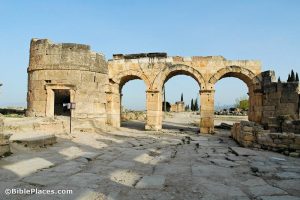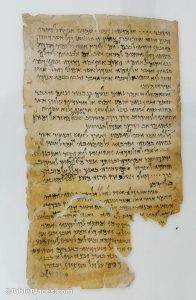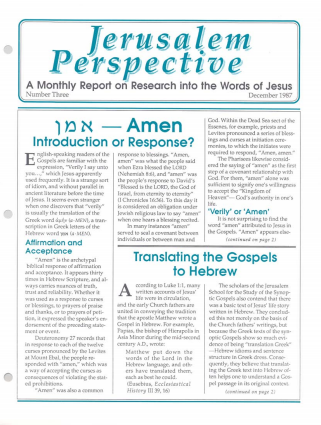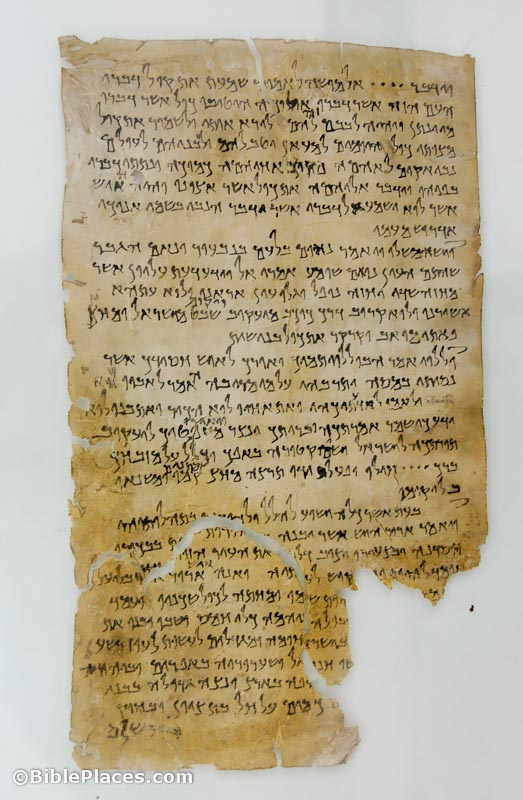According to Luke 1:1, many written accounts of Jesus’ life were in circulation, and the early church fathers are almost united in conveying the tradition that the apostle Matthew wrote a gospel in Hebrew. For example, Papias, the bishop of Hierapolis in Asia Minor about 120 A.D., wrote:
Matthew put down the words of the Lord in the Hebrew language, and others have translated them, each as best he could. (Eusebius, Ecclesiastical History 3.39.16)
One may suppose that there existed a basic text of Jesus’ life story written in Hebrew. One arrives at this supposition not merely on the basis of the church fathers’ testimony, but because the Greek texts of the synoptic gospels show so much evidence of being “translation Greek,” that is, Greek that contains Hebrew idioms and sentence structures. Consequently, one is justified in assuming that attempting to back-translate synoptic gospel texts into Hebrew might help us better understand many Gospel passages.

Dedicated to the Emperor Domitian in AD 83, this gate was standing in Hierapolis during the years Papias lived in the city. Photo by Todd Bolen. Copyright BiblePlaces.com.
Retroversion into Hebrew of Greek words in the synoptic gospels takes place in two stages. First, an examination is undertaken to determine each Greek word’s usual Hebrew equivalent in the Septuagint. (The Septuagint is the second-century B.C. Greek version of the Hebrew Bible and Apocrypha.) The Septuagint is used as a touchstone because it so strongly influenced Hebrew-to-Greek translators of succeeding generations.
Second, post-biblical Hebrew texts such as the Dead Sea Scrolls and rabbinic works are examined to determine whether there are alternate Hebrew equivalents for Greek gospel words. This is necessary because occasionally there were developments in the Hebrew language. For example, apparently, the biblical word בָּא followed by the preposition אֶל (ba [el]), in the sense of “enter,” had been totally replaced in post-biblical Hebrew with the word נִכְנַס (nichnas).

Discovered in Cave 4 at Qumran, the Testimonia contains five biblical passages about the Messiah and was written in the first century BC. Photo by Todd Bolen. Copyright BiblePlaces.com.
It also is necessary to consult post-biblical Hebrew sources when a particular word in the gospels is rare or non-existent in the Septuagint. For example, such well-known Hebrew expressions as בָּשָׁר וָדָם (basar vadam, flesh and blood) and מַלְכוּת שָׁמַיִם (malkut shamayim, kingdom of heaven) are not found in the Hebrew Scriptures. Therefore, there are no Septuagintal equivalents for them.
A knowledge of the Hebrew language and culture of Jesus’ day can greatly enhance our understanding of Jesus’ life and teachings. Of course, one does not find Hebrew lying beneath every Greek stone in the gospels of Matthew, Mark and Luke. There is, however, considerable evidence of these gospels’ Hebrew “undertext,” and efforts to learn from this evidence are amply rewarded.







































































Comments 1
I would like to purchase this article.